Cardiovascular Disorders Targets
Target Search
Background
What is Cardiovascular Disorder?
Cardiovascular disorder is also known as Cardiovascular diseases (CVD) that are manifestations of systemic vascular diseases in the heart and brain, including atherosclerosis, hypertension, hyperlipidemia, diabetes and so on. Risk factors include high blood pressure, blood viscosity, smoking, alcohol intake, diabetes, etc.
The causes of cardiovascular diseases are complex, including arteriosclerosis, high blood pressure, viral infection, respiratory diseases and so on. Common symptoms include palpitations, angina, dyspnea, coughing and hemoptysis, chest pain or chest discomfort. The treatment includes etiological treatment, anatomic treatment, pathophysiological treatment and rehabilitation treatment.
According to the WHO, cardiovascular disease is the number one cause of death worldwide, accounting for an estimated 17.9 million deaths in 2016, or 31% of all deaths worldwide. Of those, 85 percent died from heart disease and stroke. Most CVD deaths occur in low - and middle-income countries and can be prevented through population-oriented strategies that address risk factors such as tobacco use, unhealthy diets and obesity, physical inactivity and harmful use of alcohol.

Cardiovascular Disorders List
The types of cardiovascular disorders are special, including etiology, pathological anatomy and pathophysiology. In general, when diagnosing cardiovascular disease, it is necessary to list the etiology, pathological anatomy and pathophysiological classification simultaneously.
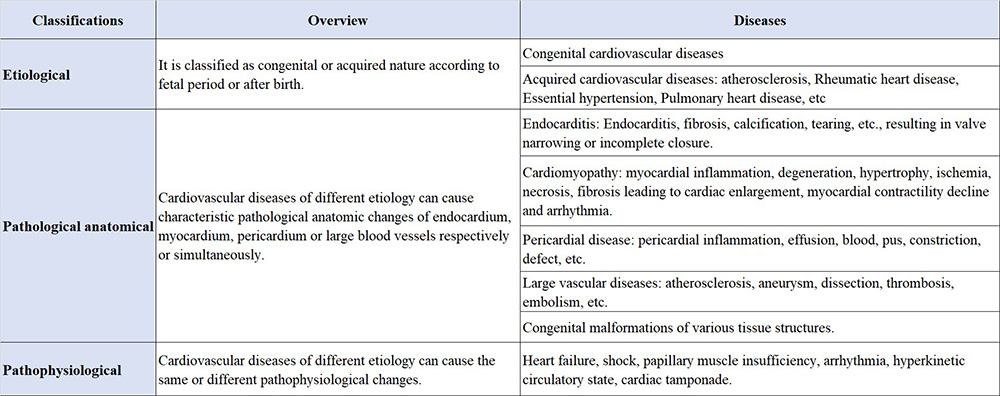
Symptoms of Cardiovascular Disorders
Although symptoms are subjective experiences that accurately reflect underlying bodily changes, several caveats must be taken into consideration in the interpretation of symptoms in CVD. Most notably, patients with CVD may experience symptoms in the absence of major changes in underlying pathogenesis. The absence of symptoms also does not necessarily confer the absence of change in underlying pathogenesis, particularly in advanced CVD.
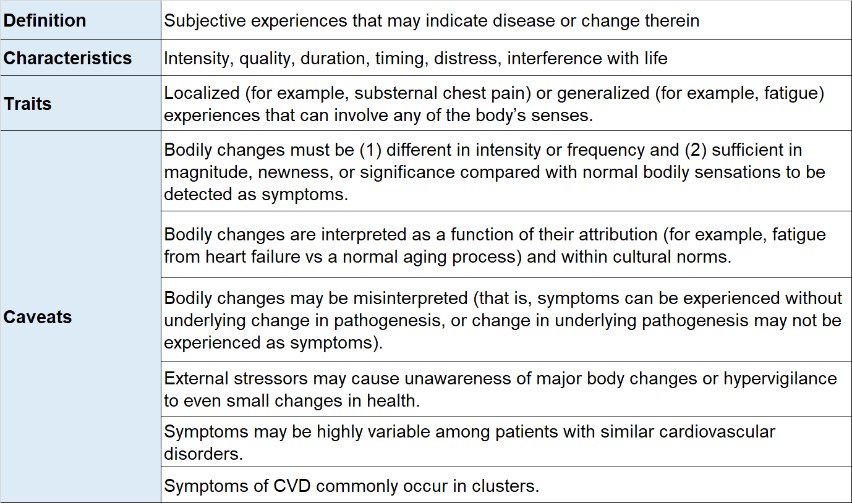
Chest pain: Chest pain, often described as pressure or discomfort behind the sternum that may radiate to the jaw, shoulders, arms, or upper back, is the most common symptom of acute coronary syndrome (ACS).
Dyspnea: Dyspnea is a common symptom of heart failure (HF) and one of the most common reasons patients seek hospitalization. Or waking up in the night with difficulty breathing.
Palpitations: The feeling of a rapid, irregular, or vigorous heartbeat.
Sitting up breathing: People with heart failure may need to sit up to breathe because breathing difficulties are exacerbated when lying down.
Edema: Accumulation of fluid in the body due to heart failure, most commonly in the ankles and legs.
Coughing up blood: Heart failure or other heart problems may cause a persistent cough or coughing up blood.
Upper abdominal pain, nausea, vomiting: These symptoms can be related to heart problems, especially if there is no obvious digestive disease.
Weakness and fatigue: People with heart failure may feel unusually tired and weak.
Limb weakness, numbness: may be related to cerebrovascular problems.
Dizziness or fainting: Lack of blood supply to the brain due to the heart's inability to pump blood efficiently.
Causes of Cardiovascular Disorders
The most important behavioural risk factors for CVD are unhealthy diet, physical inactivity, tobacco use and harmful use of alcohol. The effects of behavioral risk factors may be seen in individuals as increases in blood pressure, blood sugar and lipids, as well as overweight and obesity. These "indirect risk factors", which can be measured in primary care Settings, indicate an increased risk of heart attack, stroke, heart failure and other complications.
Stopping tobacco use, reducing dietary salt, eating fruits and vegetables, taking regular physical exercise and avoiding harmful use of alcohol have been shown to reduce the risk of cardiovascular diseases. In addition, medications for diabetes, hypertension and hyperlipidemia may be needed to reduce the risk of cardiovascular diseases and prevent heart attacks and strokes. Some health policies can create an enabling environment in which healthy choices are affordable and accessible. These policies are essential to encourage people to adopt and maintain healthy behaviours.

Treatment of Cardiovascular Disorders
WHO has identified very cost-effective interventions for the prevention and control of cardiovascular disease that are feasible even in low-resource Settings. This includes two interventions: population-wide and individual, and it is recommended that both be used in combination to reduce the greatest burden of cardiovascular disease.
Population-wide level include:
- Comprehensive tobacco control policies;
- Introduce taxes to reduce consumption of foods high in fat, sugar and salt;
- Laying walking and cycling paths to increase physical activity;
- Strategies to reduce the harmful use of alcohol;
- Provision of healthy school meals to children.
Prevention of CVD at the individual level requires targeting individual health care interventions at individuals who are at medium and high overall risk of CVD, or at individuals whose single risk factors (such as diabetes, hypertension, and hypercholesterolemia) exceed therapeutic recommended thresholds. This approach is feasible in primary health care in low-resource Settings.
For secondary prevention of cardiovascular disease in people who already have other conditions, such as diabetes, the following treatments are necessary:
- aspirin
- beta-blockers
- angiotensin-converting enzyme inhibitors
- statins
The benefits of these interventions are mostly unique, but when combined with smoking cessation, nearly 75% of vascular recurrent events can be prevented. At present, there is a significant shortfall in the implementation of these interventions, especially at the primary health care level.
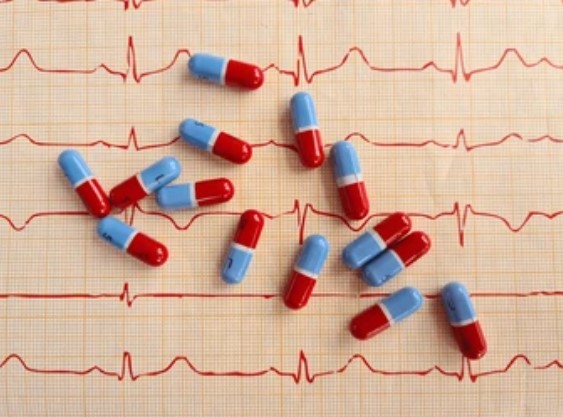
An acute event such as a heart attack or stroke should be promptly managed. Sometimes, surgical operations are required to treat CVDs. They include:
- Coronary artery bypass
- Balloon angioplasty
- Valve repair and replacement
- Heart transplantation
- Artificial heart operation
In addition, these surgeries require medical devices to treat certain cardiovascular diseases. Such devices include pacemakers, artificial heart valves and patches used to repair heart defects.
Case Study
Case Study 1: Recombinant Human ACE2 protein (ACE2-736H)
The severity of the Severe Acute respiratory syndrome Coronavirus 2 (SARS-CoV-2) global pandemic has prompted researchers and clinicians to look for key features that trigger the virus to infect lung cells. In this work, we performed a computer analysis of protein-protein interactions between the receptor-binding domain (RBD) of the viral spike protein and the human angiotensin-converting enzyme 2 (hACE2) receptor to highlight key alterations that occur from SARS-CoV to SARS-CoV-2. In addition, we investigated the role of interfacial water molecules in viral uptake by lung cell A549 by binding and maintaining RBD/hACE2 complexes at different temperatures using spike protein-coated nanoproteins as pseudoviruses and fluorescence-activated cell sorters (FACS) as quantitative methods. The structural and kinetic characteristics presented here may provide guidance for the development of new drug molecules, vaccines, or antibodies to combat the COVID-19 pandemic.
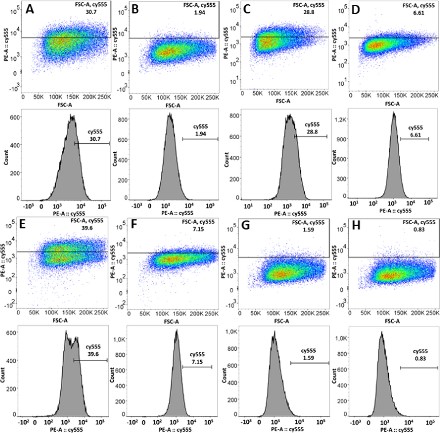
Fig1. Receptor-mediated uptake analysis of A549 cells using FACS. (Ajay Vikram Singh, 2022)
Case Study 2: Recombinant Human TNF protein (TNF-154H)
Silicon nanowire (SiNW) field-effect transistor (FET) biosensors for multiple detection of biomarkers in real samples remain challenging. Interleukin-8 (IL-8) and tumor necrosis factor α (TNF-α) are two typical biomarkers of oral squamous cell carcinoma (OSCC). In this study, a multiplex assay for the detection of IL-8 and hTNF-α in saliva using a SiNW FET biosensor was developed, enabling multiplex detection of two biomarkers in saliva. The detection limits of the established method were as low as 10 fg/mL in 1 × PBS and 100 fg/mL in artificial saliva. This method is expected to be widely used in the early diagnosis of OSCC because it has the advantages of no label, multiple detection, non-invasive analysis, high sensitivity and specificity.
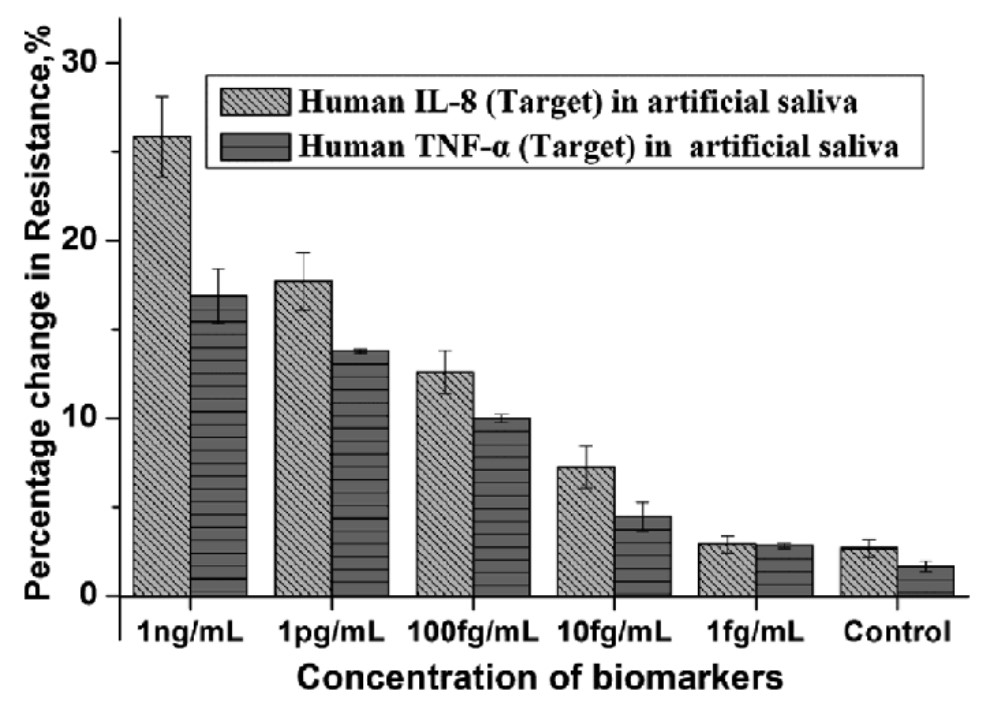
Fig2. Percentage change in the resistance versus different concentrations of IL-8 and TNF-α spiked in artificial saliva. (Yulin Zhang, 2015)
Case Study 3: Recombinant Human PPARG, 209-477 aa (PPARG-2772H)
Proteolytic cleavage of the neuron isomer of mouse cell adhesion molecule L1, resulting in the production and nuclear input of L1 fragment, which includes intracellular domain, transmembrane domain, and partial extracellular domain. Here, the LXXLL and FXXLF moieties of the extracellular and transmembrane domains of the L1 fragment were found to mediate interactions with nuclear estrogen receptor α (ERα) and β (ERβ), peroxisome proliferator-activated receptor γ (PPARγ), and retinoid X receptor β (RXRβ). Mutations in the LXXLL motif in the transmembrane region and the FXXLF motif in the extracellular region interfere with the L1 fragment's interaction with these nuclear receptors and, when transduced by the virus into mouse embryos in the womb, lead to impaired motor coordination, learning and memory, and synaptic connections in the cerebellum in adulthood. The results show that the interaction between nuclear L1 and different nuclear receptors is related to the formation and plasticity of synaptic contact.
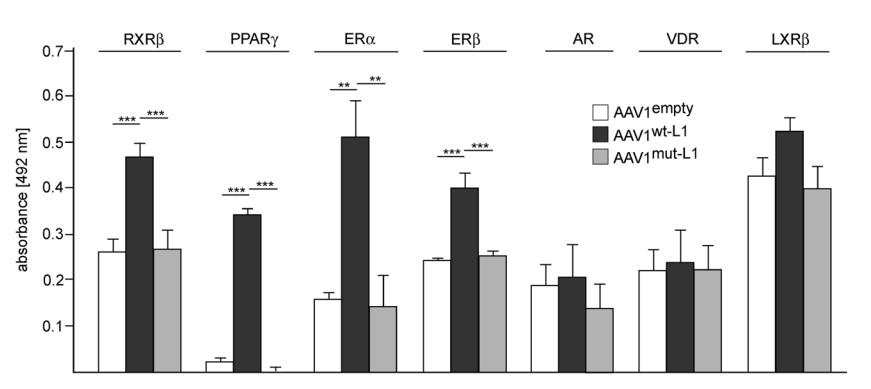
Fig3. Nuclear L1 interacts with nuclear receptors. (Kristina Kraus, 2018)
Related Resources
Cardiovascular disorders are a major health problem worldwide that not only affect the quality of life of individuals, but also pose a major challenge to public health systems. With the deepening of the understanding of cardiovascular diseases and the advancement of medical technology, the prevention, diagnosis and treatment methods are constantly improved.
Contact us or send an email at for project quotations and more detailed information.
Quick Links
-

Papers’ PMID to Obtain Coupon
Submit Now -

Refer Friends & New Lab Start-up Promotions

